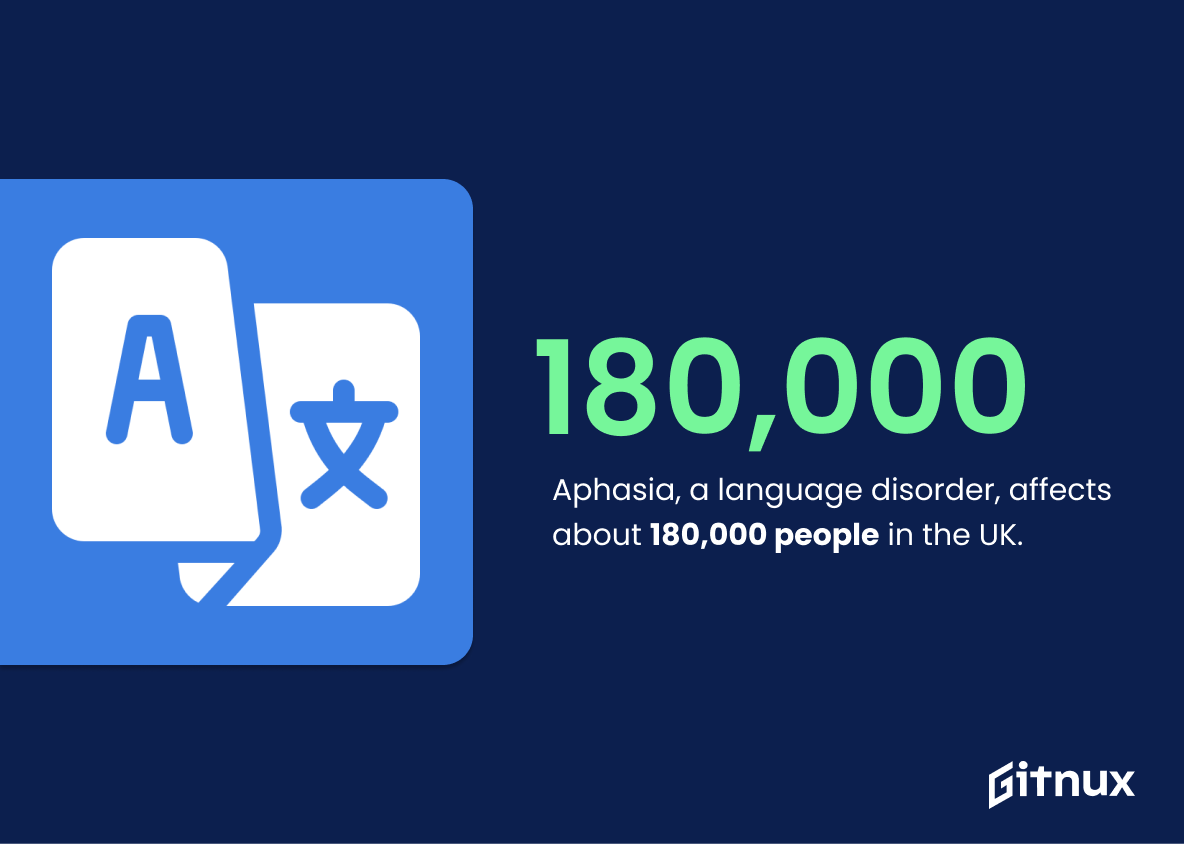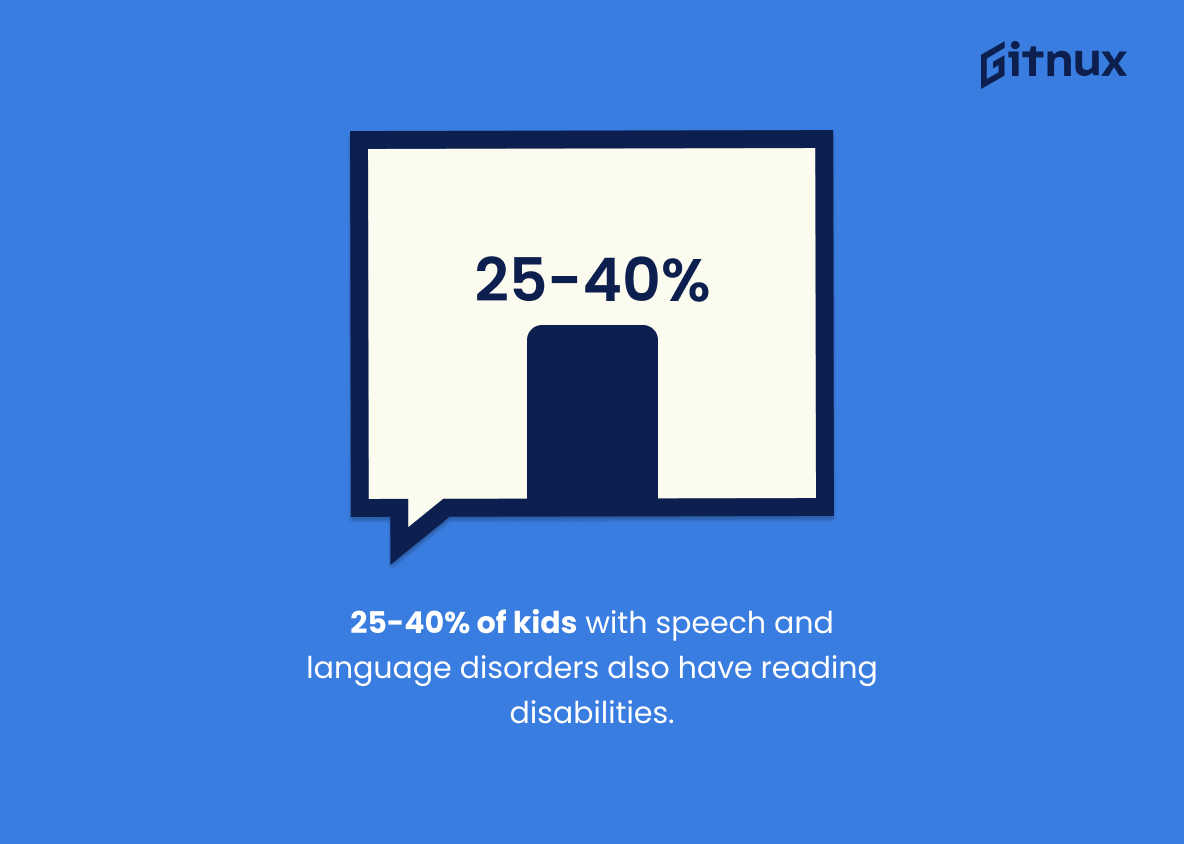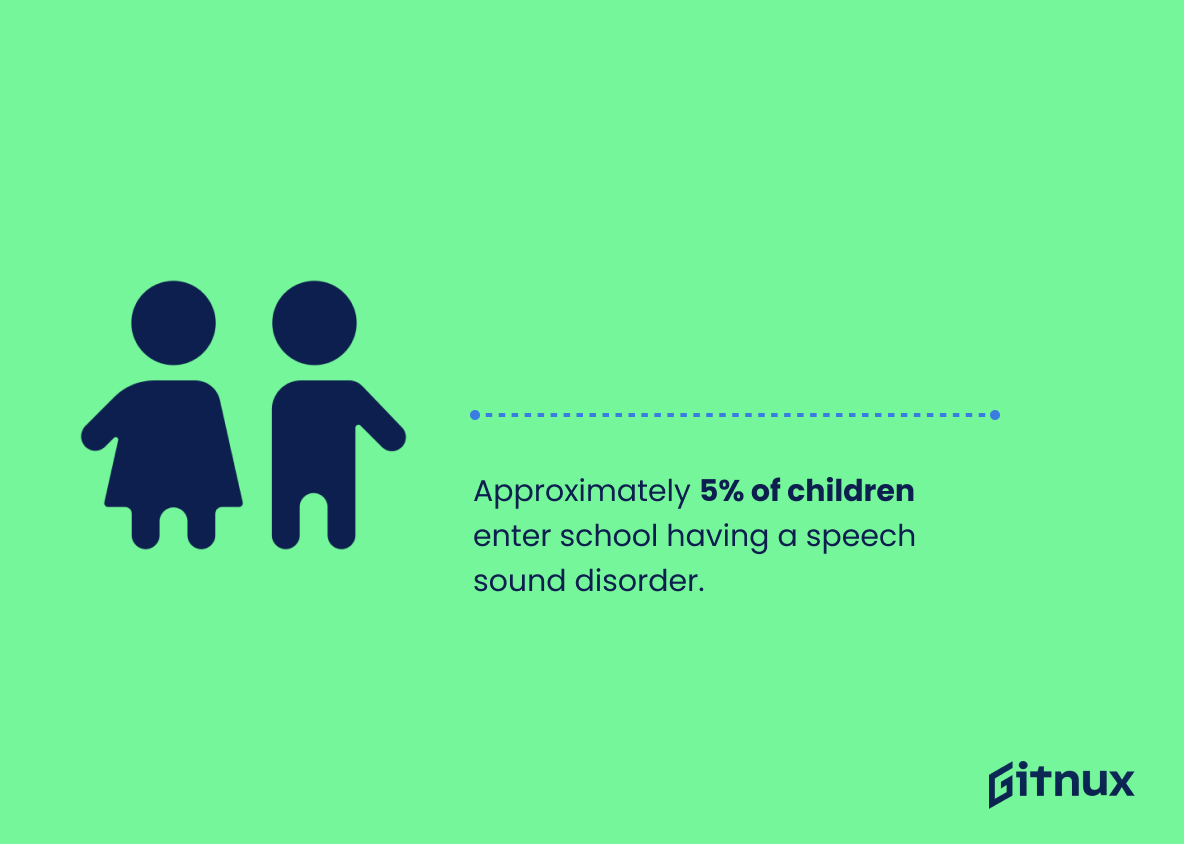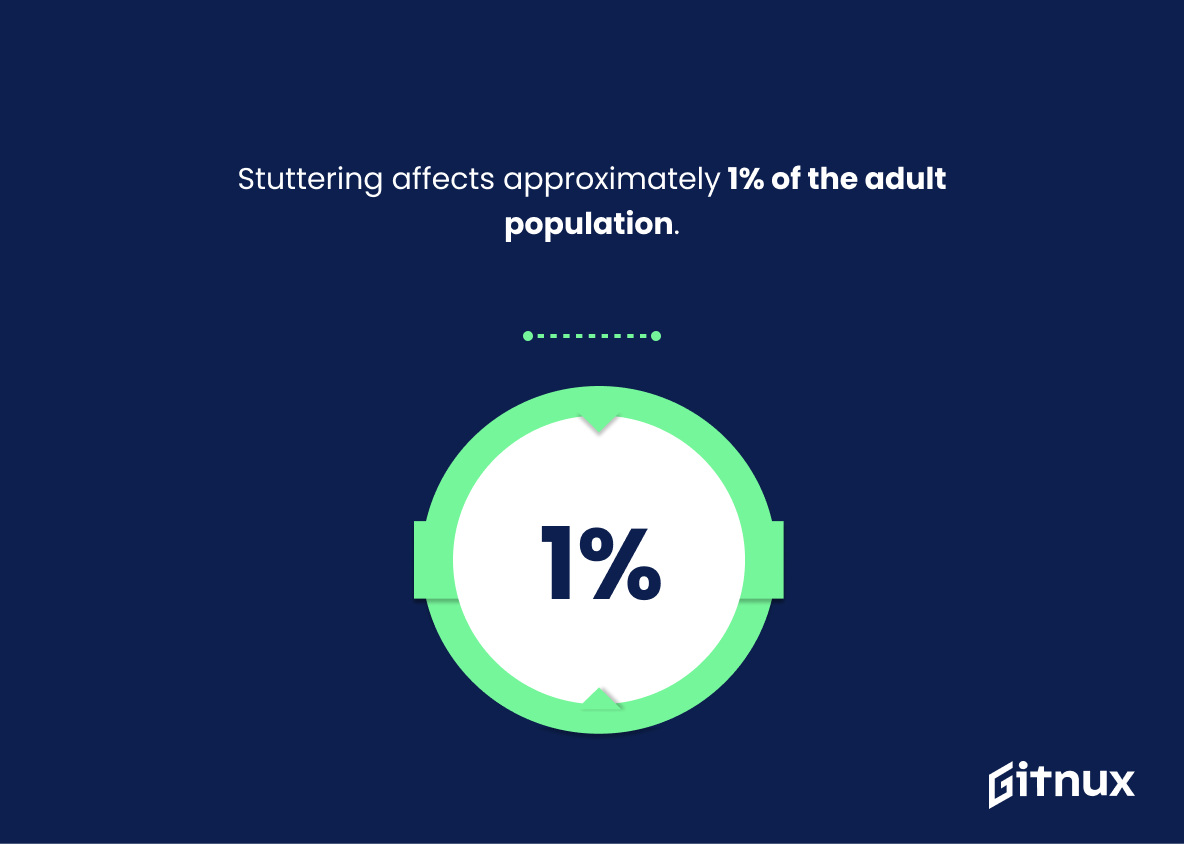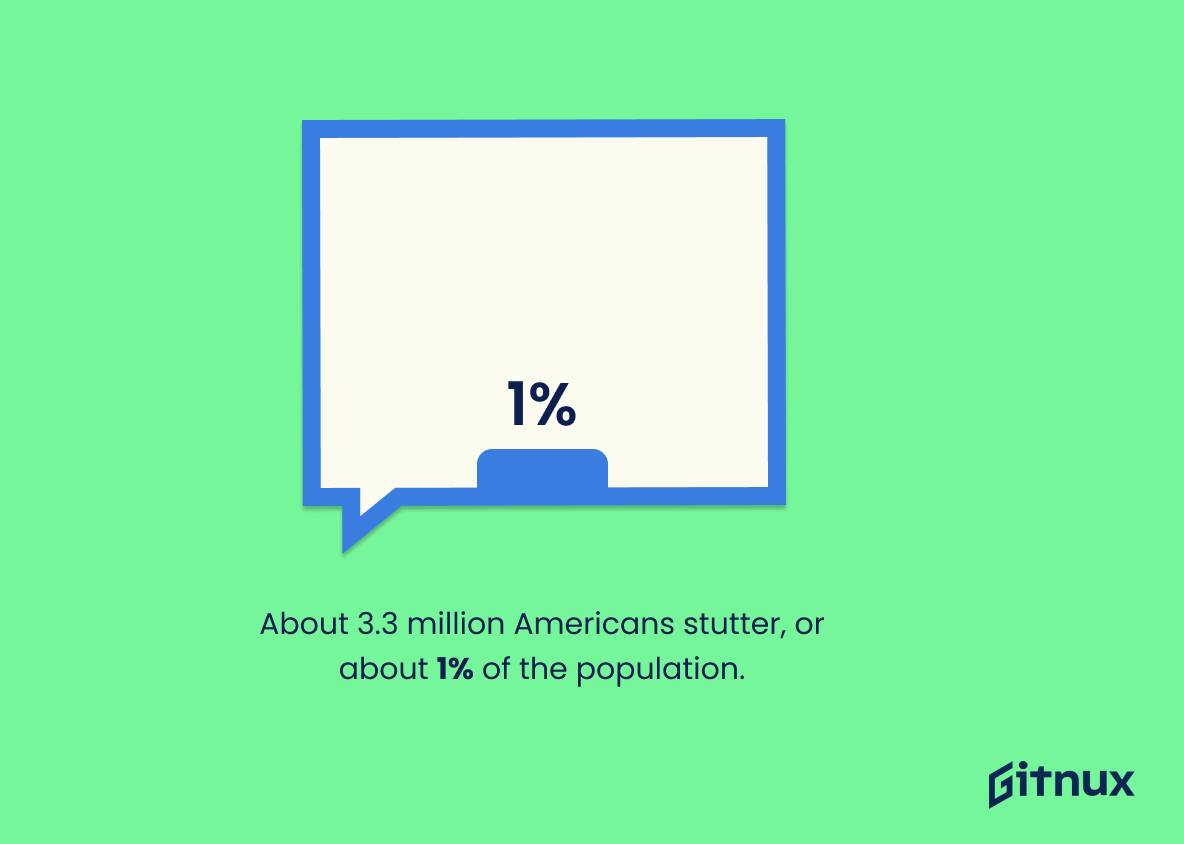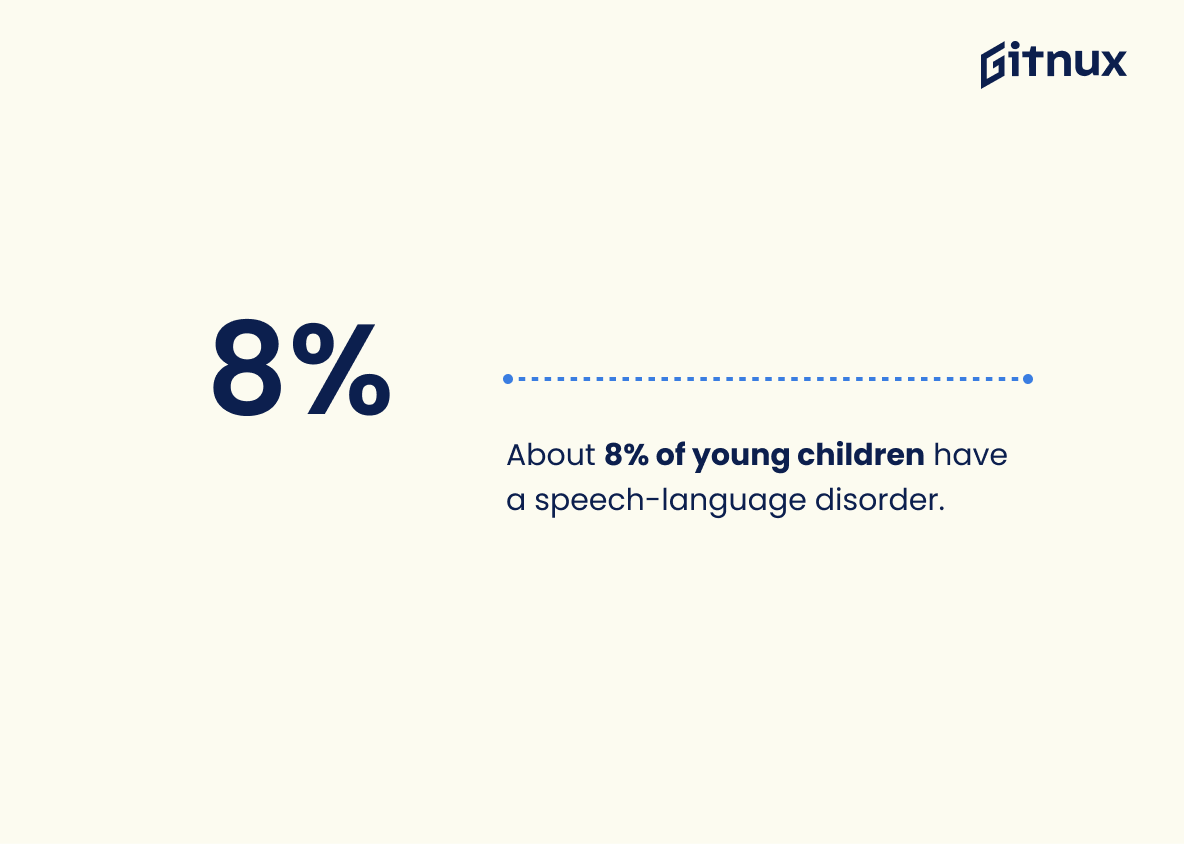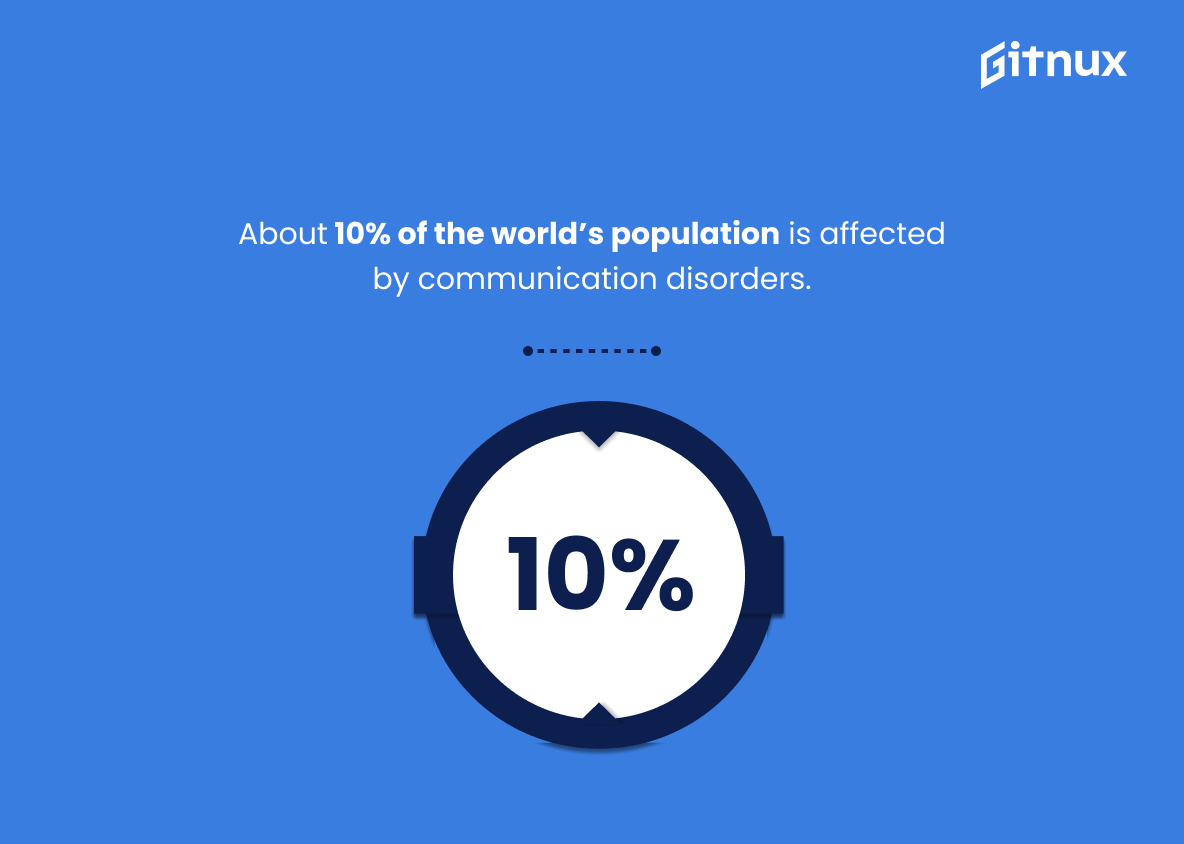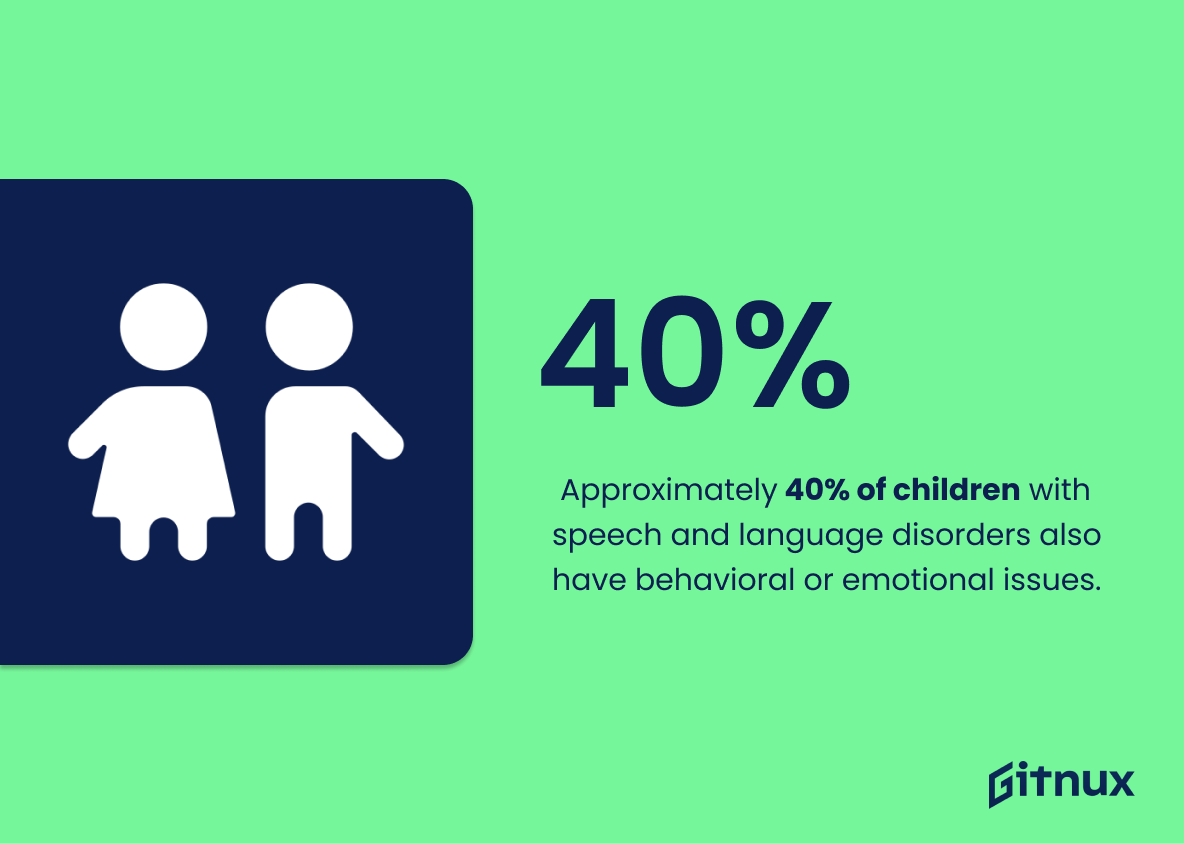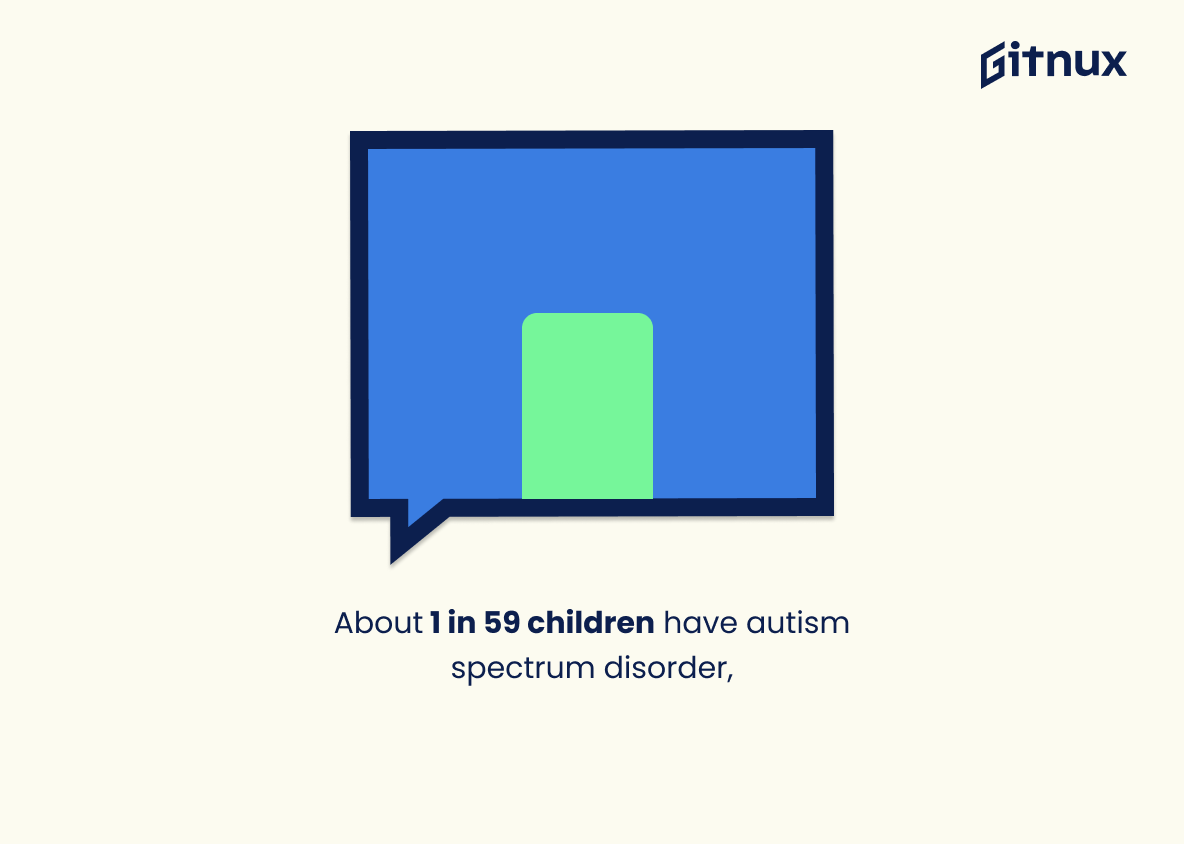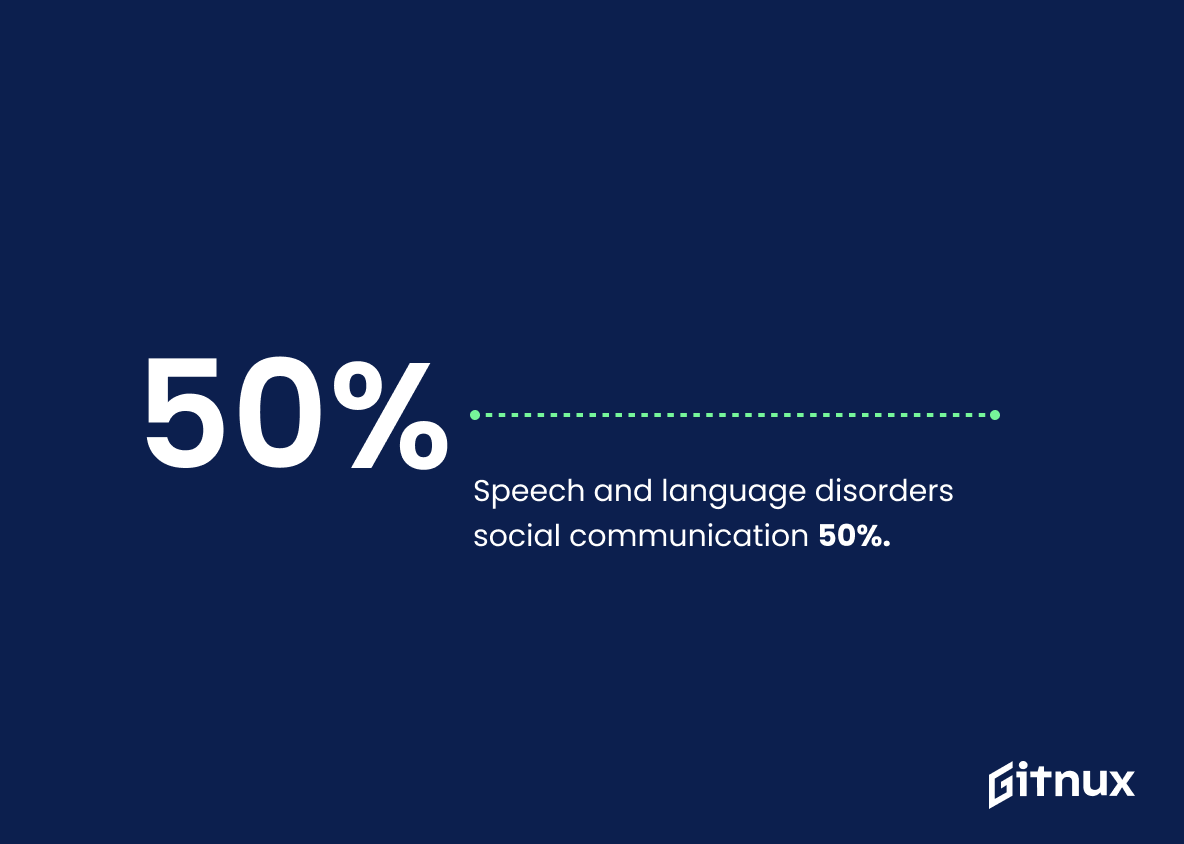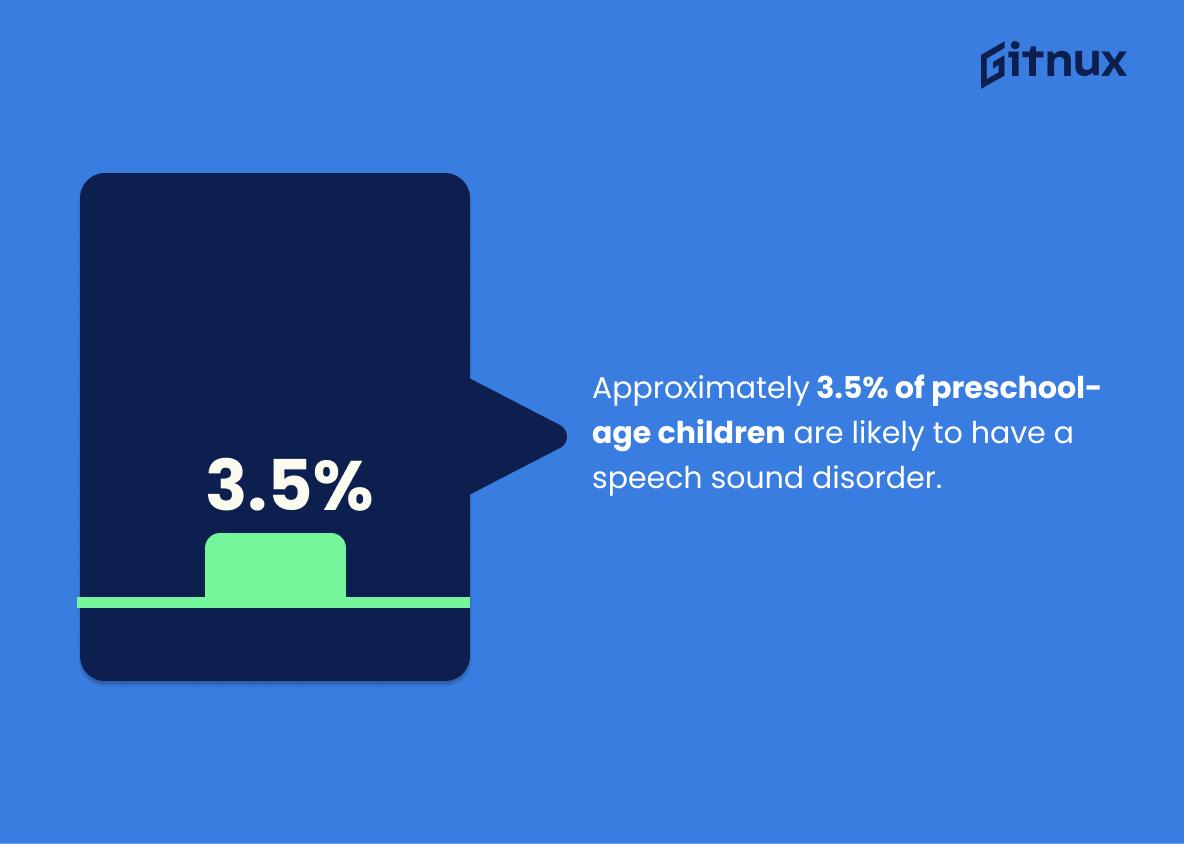Speech and language disorders are a common problem in the United States, affecting millions of people. According to the National Institute on Deafness and Other Communication Disorders (NIDCD), about 7.5 million Americans have trouble using their voice, while two to three out of every 1,000 children born in the US have detectable hearing loss in one or both ears. An estimated 17.9 million adults report having had a problem with their voice within the last 12 months as well.
In addition to these statistics for America, Aphasia UK reports that around 180,000 people living in Britain suffer from this communication disorder which affects an individual’s ability to communicate effectively through speech or writing. Furthermore, research has found that 25-40% of children with speech and language disorders also experience reading disabilities; approximately 5% enter school already exhibiting signs of such difficulties; 11.4% present attention deficit hyperactivity disorder (ADHD); stuttering is reported by 1%; 8% show symptoms at preschool age; over 50%, social communication problems; 3.5%, sound issues before kindergarten entry – all according to reliable sources like JAMA Otolaryngology–Head & Neck Surgery journal article published online June 2019 edition titled “Prevalence Estimates for Voice Problems” among others cited below:
1) https://www.nidcd
This statistic is a stark reminder of the prevalence of speech and language disorders in the United States. It highlights the need for greater awareness and understanding of these disorders, as well as the need for more resources to help those affected. It is a call to action for those who are able to help, to do their part in providing support and assistance to those who are struggling with their speech and language.
Two to three out of every 1,000 children in the United States are born with a detectable level of hearing loss in one or both ears.
This statistic is a stark reminder of the prevalence of hearing loss in children, and serves as a call to action for parents and educators to be aware of the signs and symptoms of speech and language disorders. It is a reminder that early detection and intervention are key to helping children with hearing loss reach their full potential.
Speech And Language Disorders Statistics Overview
Aphasia, a language disorder that affects the ability to communicate, affects around 180,000 people in the UK.
This statistic is a stark reminder of the prevalence of aphasia in the UK, highlighting the need for greater awareness and understanding of this language disorder. It serves as a call to action for those who are in a position to help those affected by aphasia, and to ensure that they receive the support and resources they need.
About 25-40% of children with speech and language disorders also have a reading disability.
This statistic is a powerful reminder of the interconnectedness of speech and language disorders and reading disabilities. It highlights the importance of recognizing the potential for overlap between these two conditions and the need for comprehensive assessment and treatment plans that address both. By understanding the prevalence of this overlap, we can better equip ourselves to provide the best possible care for those affected by speech and language disorders.
Approximately 5% of children enter school having a speech sound disorder.
This statistic is a stark reminder of the prevalence of speech sound disorders among children, highlighting the need for greater awareness and understanding of the issue. It serves as a call to action for parents, educators, and healthcare professionals to be more vigilant in identifying and addressing speech sound disorders in children.
Children between the ages of 3-17 with speech and language disorders have a higher prevalence of attention deficit hyperactivity disorder (ADHD) at around 11.4%
This statistic is a powerful reminder of the close relationship between speech and language disorders and attention deficit hyperactivity disorder (ADHD). It highlights the importance of early diagnosis and intervention for children with speech and language disorders, as they are more likely to be affected by ADHD. This knowledge can help parents, educators, and healthcare professionals to better understand the needs of these children and provide them with the necessary support and resources.
Stuttering affects approximately 1% of the adult population.
This statistic is a powerful reminder of the prevalence of stuttering in the adult population, highlighting the need for greater awareness and understanding of this speech disorder. It serves as a reminder that speech and language disorders are not uncommon, and that those affected by them should not feel alone. Furthermore, it serves as a call to action for those in the medical and educational fields to continue to research and develop effective treatments and interventions for those affected by speech and language disorders.
Early intervention for children with speech and language disorders can improve social communication skills by 75%.
This statistic is a powerful reminder of the importance of early intervention for children with speech and language disorders. By intervening early, we can help these children develop the social communication skills they need to succeed in life. This statistic highlights the potential of early intervention to make a real difference in the lives of children with speech and language disorders.
About 3.3 million Americans stutter, or about 1% of the population.
This statistic serves as a stark reminder of the prevalence of stuttering in the United States. It highlights the fact that this is a disorder that affects a significant portion of the population, and that it is an issue that needs to be addressed.
About 8% of young children have a speech-language disorder.
This statistic is a stark reminder of the prevalence of speech-language disorders among young children. It serves as a call to action for parents, educators, and healthcare professionals to be aware of the signs and symptoms of these disorders and to take steps to ensure that children receive the necessary support and treatment.
Approximately 70% of children with speech and language disorders have a family history of speech and language problems.
This statistic is a powerful reminder that speech and language disorders can be hereditary, and that families should be aware of the potential for their children to develop these issues. It also highlights the importance of early intervention and diagnosis, as well as the need for families to be aware of the signs and symptoms of speech and language disorders. Knowing this statistic can help families to be proactive in seeking help for their children if they suspect a problem.
About 10% of the world’s population is affected by communication disorders.
This statistic is a stark reminder of the prevalence of communication disorders in the world today. It serves as a call to action for those who are in a position to help those affected by these disorders, and to raise awareness of the issue. It also highlights the need for more research and resources to be devoted to understanding and treating these disorders.
Nearly 40% of children with speech and language disorders have a behavioral or emotional disorder.
This statistic is a powerful reminder of the complexity of speech and language disorders, and how they can be intertwined with other issues. It highlights the importance of comprehensive assessments and treatments for children with speech and language disorders, as well as the need for a holistic approach to their care. It also underscores the need for early intervention and support for these children, as well as their families, to ensure that they can reach their full potential.
About 1 in 59 children is identified with an autism spectrum disorder, many of whom have language and communication challenges.
This statistic is a stark reminder of the prevalence of autism spectrum disorder in children, and the need to be aware of the language and communication challenges that come with it. It is a call to action for parents, educators, and healthcare professionals to be aware of the signs of autism spectrum disorder and to provide the necessary support and resources to those affected.
Over 50% of individuals with speech and language disorders had difficulties with social communication.
This statistic is a powerful reminder of the impact that speech and language disorders can have on social communication. It highlights the need for greater awareness and understanding of these disorders, as well as the importance of providing support and resources to those affected. It also serves as a reminder that these disorders can have a profound effect on an individual’s ability to interact with others, and that this should be taken into account when considering the overall impact of the disorder.
Approximately 3.5% of preschool-age children are likely to have a speech sound disorder.
This statistic is a stark reminder of the prevalence of speech sound disorders among preschool-age children. It highlights the importance of early intervention and diagnosis, as well as the need for more research into the causes and treatments of these disorders.
Conclusion
The statistics presented in this blog post demonstrate the prevalence of speech and language disorders across different age groups. From these figures, it is clear that millions of people are affected by communication difficulties, with boys being twice as likely to be diagnosed than girls. Early intervention can help improve social communication skills for those who have a disorder, while family history may also play a role in its development. It is important to recognize the impact that speech and language disorders can have on individuals so they receive appropriate support and treatment when needed.
References
0. – https://www.www.aphasia.org
1. – https://www.asha.org
2. – https://www.pubmed.ncbi.nlm.nih.gov
3. – https://www.www.nidcd.nih.gov
4. – https://www.www.stutteringhelp.org
5. – https://www.www.cdc.gov
6. – https://www.www.asha.org
7. – https://www.www.ncbi.nlm.nih.gov
